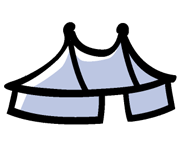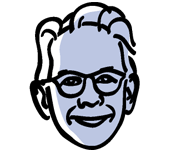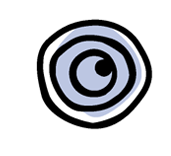Le magazine du Cirque et de l’Illusion1 February 2010
L’atelier du peintre (the Artist’s workshop), as light as a feather...
 Cirque Plume has quite a history. Although the principal founders of the circus didn’t meet until later, the adventure began in 1984 with a meeting during which Bernard Kudlak " suggested forming a circus, of a kind that would combine the festival spirit, politics, dreams, vagabond souls, journeys, poetry, music, people coming together in brotherhood, without violence, a circus for the people, Cirque Plume".
Cirque Plume has quite a history. Although the principal founders of the circus didn’t meet until later, the adventure began in 1984 with a meeting during which Bernard Kudlak " suggested forming a circus, of a kind that would combine the festival spirit, politics, dreams, vagabond souls, journeys, poetry, music, people coming together in brotherhood, without violence, a circus for the people, Cirque Plume".
A good twenty years later with nine shows under its belt, what remains of that original dream? Intuition, one of the pillars of modern circus, a spirit of collective creativity where everyone can contribute their ideas, their touch of madness, and here comes a new production, ’L’atelier du peintre’ (the Artist’s studio), which its designer describes as "a journey into the artist’s imagination". Another founder member, Robert Miny, is at the musical controls, producing music played by a live band to sweep the audience along.
A series of pictures…
’L’atelier du peintre’ begins with a reproduction of ’Las Meninas’ by Velasquez, a painting that is symbolic of the show: the painting is within the painting of the painter shown in the painting. This story within a story could be a portent of a show that is rarefied and intellectualised, but not so, the paintings and references follow on from each other with a lightness of touch and lyricism, and there’s something for everyone. All the way through this pacey and joyful spectacle, pictures come to life: a sculptured odalisque wakes up amongst angels to bewitch and kidnap an art lover; a sculpture with a heart made of anything but stone comes to life and takes part in a magical acrobatic duo; the fabric of a dress is inspired both by Klimt and Van Gogh’s sunflowers whereas Klein blue is draped over a nymph and sand and light sculpt images of Japanese-style trees. Genres and periods are mixed up together and used for the aesthetic style of the performance.
...and acts.
The pictorial and musical virtuosity is mirrored by the skill of the cast and the acts that combine technique and beauty. The aerial silk number from Chelsea O’Brian unfolds delicately, as she is unwrapped from layers of filmy silk fabric, with clever lighting and smoke effects. Simple and beautiful at the same time, the same muse perhaps inspires the tortured artist interpreted by Antoine Nicaud. The latter gives us a majestic tour de force in an aerial strap routine. Celestial again, like a butterfly flitting from flower to flower, Laura Smith rises from her trampoline from which red petals emerge. A magical image that stays with one long after leaving the show! The floor acrobats are not forgotten, with the statue duo, a magnificent hand-to-hand balancing act interpreted by Mark Piekio and Laura Smith. Kristina Dniprenko performs on the German wheel in a routine that is flexible, delicate and quite magical.
Laughter and music...
The clowns haven’t been left out: they punctuate the proceedings with their touch of humour and zaniness, providing a thread that runs through the tableau, with "oldies " Robert Miny and Pierre Kudiak dispensing their art and their uniquely personal view of painting; tools ranging from a trowel to a bazooka that ends up sellotaping the painter to the picture, drawing a picture of a world that is slightly unhinged and very messy. The humour is sometimes slightly too long and indigestible, but occasionally it can be gentle and poetic, like the interlude with a little flower played by Hugues Fellot, known as "Pedro". Tibo Tout Court, alias Oui-Oui, is a magician for the eyes and ears. He throws white balls up in the air where they cross with black balls, shadows cast by mirrors, the tableau being accompanied by live music played the band but also by Tibo, who makes musical notes using a sound board; everything ties up to construct a magical tableau.
And for the finale?
The finale brings everyone together, in an enormous trampoline game, with the artists passing in front of each other inside a metal and canvas structure, the musicians setting the tempo for the aerial ballet, before the game settles down and everyone finds themselves a canvas which they fill to the best of their ability, with varying degrees of success, producing a sort of exhibition room designed by a mad conservator. It’s symbolic of the show that we come away with some fine images in our head, but with the feeling that the finished picture wasn’t quite there. The pretext of ’l’atelier du peintre’ doesn’t finish off the job, leaving a sense of incompleteness...
Agathe Poupeney









